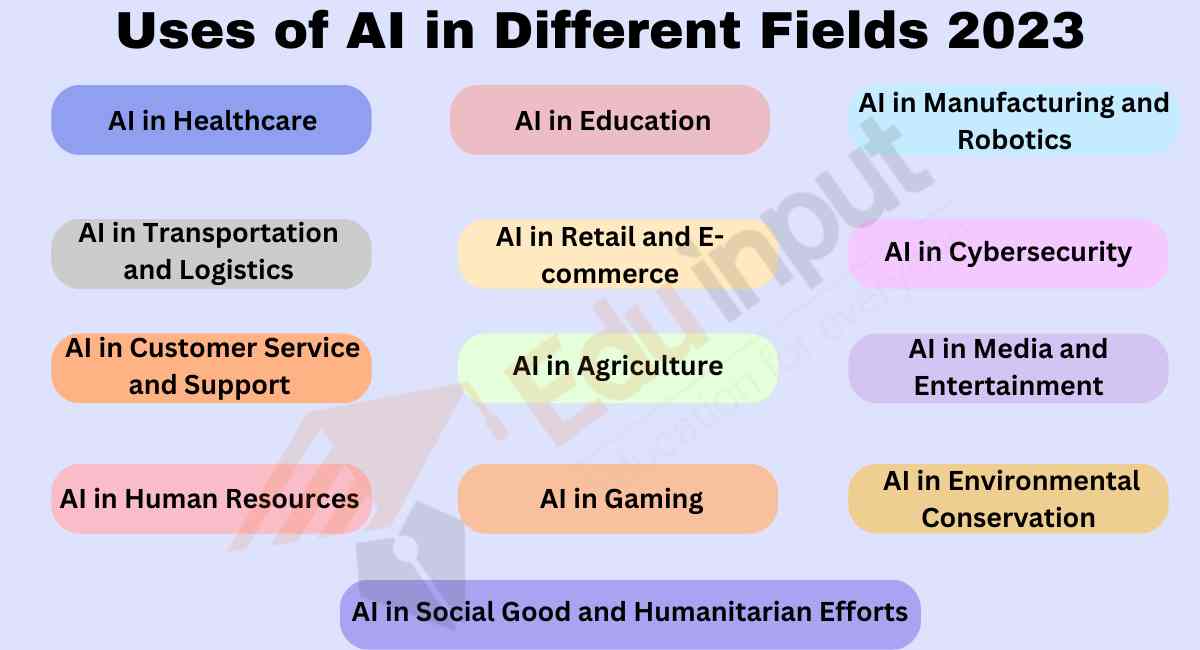Advantages of Artificial Intelligence in the Classroom
Artificial Intelligence (AI) brings many benefits to our classrooms, making learning more exciting and effective. This helps us learn more about how students learn. It helps to understand how well our education system works overall.
AI makes educational research faster and more precise. It gives us valuable knowledge to improve education for everyone.

Advantages of Al in the Classroom
With AI, students can enjoy personalized learning paths, instant answers to their questions, and engaging experiences like Virtual Reality (VR). AI makes learning more exciting and efficient, creating a bright future for education.
Artificial Intelligence (AI) is transforming education in following ways.
1. Analyzing Learning Gaps
AI examines our classrooms to detect learning gaps. They look at how we’ve done in the past to find places where we might need some extra help. Things we didn’t understand fully are called learning gaps.
AI helps our teachers see these gaps so they can give us the right support and help us understand better. It acts as a guide to make sure we learn everything well.
2. Personalized Learning Paths
One of the most significant advantages of AI in the classroom lies in its ability to create personalized learning paths for each student. Through sophisticated data analysis, AI identifies individual strengths, weaknesses, and learning preferences.
It understands what we’re good at and what we need help with. We can learn in a way that suits us best. It makes it easier to understand and remember things.
This personalized approach fosters a deeper understanding of subjects, increases engagement, and boosts confidence. It ultimately drive better academic performance.
3. Automated Grading and Assessment
AI has grading and assessment process easy for educators. By using AI-powered algorithms, teachers can automate the grading of multiple-choice exams, quizzes, and assignments.
This automation saves valuable time for teachers. It allows them to focus on providing personalized feedback, refining teaching methodologies, and creating a more enriching classroom environment.
4. Engagement
With AI (Artificial Intelligence), we get to play games while we learn. AI brings us amazing experiences like Virtual Reality (VR) and Augmented Reality (AR) that make learning super fun.
These ways of learning keep us motivated and eager to explore new things in class. AI makes learning an adventure.
5. Intelligent Tutoring Systems (ITS)
Intelligent Tutoring Systems (ITS) function as virtual learning companions. It extends educational support beyond the traditional classroom setting. AI-powered ITS provides instant assistance and explanations to students, mirroring the role of human tutors.
This real-time support helps students grasp complex concepts more effectively, encourages active participation, and nurtures a positive learning experience.
6. Virtual Reality and Immersive Learning
AI and Virtual Reality (VR) are working together to make learning really fun! They create awesome experiences that feel like real adventures for students.
With AI-driven VR, we can go on virtual field trips, see historical events from the past, and do interactive activities that make learning super exciting. This technology uses our senses to help us remember and understand things better.
7. Addressing Learning Disabilities
AI tools offer solid support to students with learning disabilities. AI tools help students who have trouble learning in some ways.
For example, some students with dyslexia find it hard to read, but AI can read the text aloud for them. And if they have trouble writing, AI can turn their spoken words into written text. This makes it easier for them to understand and participate in class.
8. Enhancing Classroom Efficiency
AI facilitates the creation of smart classrooms, equipped with AI-driven tools that optimize classroom efficiency.
AI can handle administrative tasks, such as attendance tracking and scheduling, freeing up valuable time for teachers to concentrate on meaningful interactions with students.
The result is a more engaging and productive learning environment that promotes growth and curiosity.
9. Real-time Feedback and Assessment
AI facilitates real-time feedback and assessment during the learning process. Timely feedback empowers students to identify areas of improvement and take corrective measures promptly.
This continuous feedback loop nurtures a growth mindset, encouraging students to proactively embrace challenges and strive for academic excellence.
10. Time Saving
AI acts as a creative assistant, freeing up time for students to focus on higher-level skills such as critical analysis and creativity.
It handles tasks like generating ideas and structuring content. AI empowers students to dig deeper into complex subjects and express their ideas with confidence.
11. Enhancing Teacher Professional Development
AI-driven analytics provides valuable insights into teaching methodologies, classroom dynamics, and student progress.
This data-driven approach assists educators in identifying their strengths and areas for improvement, fostering continuous professional development.
With AI support, teachers can refine their teaching strategies and create impactful learning experiences.

 written by
written by 




Leave a Reply